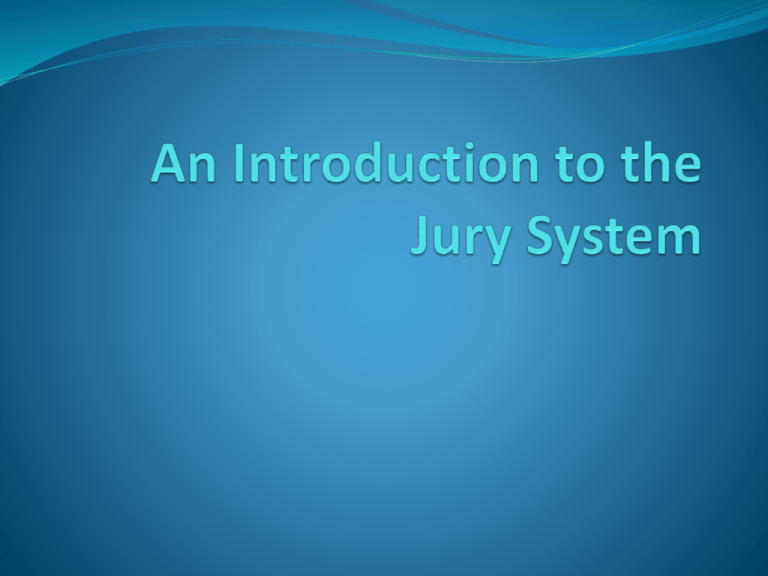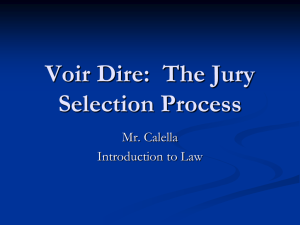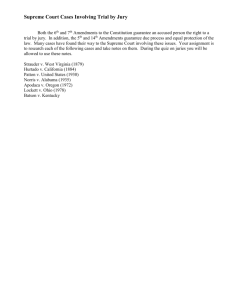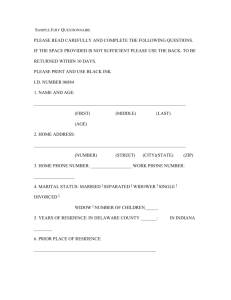An Introduction to the Jury System
advertisement

History The jury has its roots in the middle ages. English judges used to assemble a group of knowledgeable people from the location where a crime happened to help identify who committed it. The jury eventually developed into two types: Grand Jury: investigative, determines whether there is enough evidence that a crime has been committed in order to bring the accused to trial. Petit, or trial, jury: the group of people who judge the facts presented at trial. For the rest of this slideshow, we will be learning about the trial jury. Since before the American Revolution, English and American juries have deliberated in secret. Because a jury deliberates secretly, it may return any decision it wants, even a “wrong” one. Selection of the Trial Jury How Juries are Selected The government takes names from voter registration lists and motor vehicle registrations, in calling people for jury duty. Every person has the legal duty to report for jury duty in response to a summons to serve. However, after reporting for service, people can often get out of their jury service if they have a good excuse, such as financial hardship. Voir Dire Before the trial starts, prospective jurors are questioned. This process is termed "voir dire." In federal courts, questioning is usually exclusively done by judges, though the judges often will ask questions suggested by the lawyers. In many state courts, lawyers conduct the voir dire. It may be up to the judge to decide whether to conduct the questioning herself, or whether to let the lawyers do it. Before the jurors are questioned by the judge and/or the lawyers, they will fill out a questionnaire. In conducting the voir dire, the state and the defense have two goals: 1) to eliminate all members of the jury panel who have an obvious reason why they might not render an impartial decision in the case. 2) each side wants to eliminate those who they believe would be unfavorable to their side even though no reason is apparent for the potential bias. In order to achieve these goals Each lawyer is allowed to excuse prospective jurors for "cause." For example, a juror who is related to one of the parties, or has a personal stake in the outcome of the litigation, or has a strong predisposition as to the verdict can be excluded for cause. Each side is allowed a number of “peremptory challenges” — requests to the court to exclude a prospective juror with no reason given. Peremptory Challenges A peremptory challenge can be exercised on any basis the attorney wishes, except that a person cannot be kept off a jury because of his or her race or gender. Note that while the US Supreme Court has held that it is unconstitutional to use peremptory challenges to exclude people from juries due to race or gender, it is very hard to prove what a lawyer’s reasons are for excluding someone. Composition of Juries Most commonly a jury consists of 12 individuals, though there can be fewer people in some jurisdictions. Historically, jury verdicts had to be unanimous in criminal cases. (currently, some jurisdictions allow convictions by a majority in less important cases.) If the jury cannot come to a consensus, it is regarded as a “hung jury” and the matter can be retried before a new jury.






